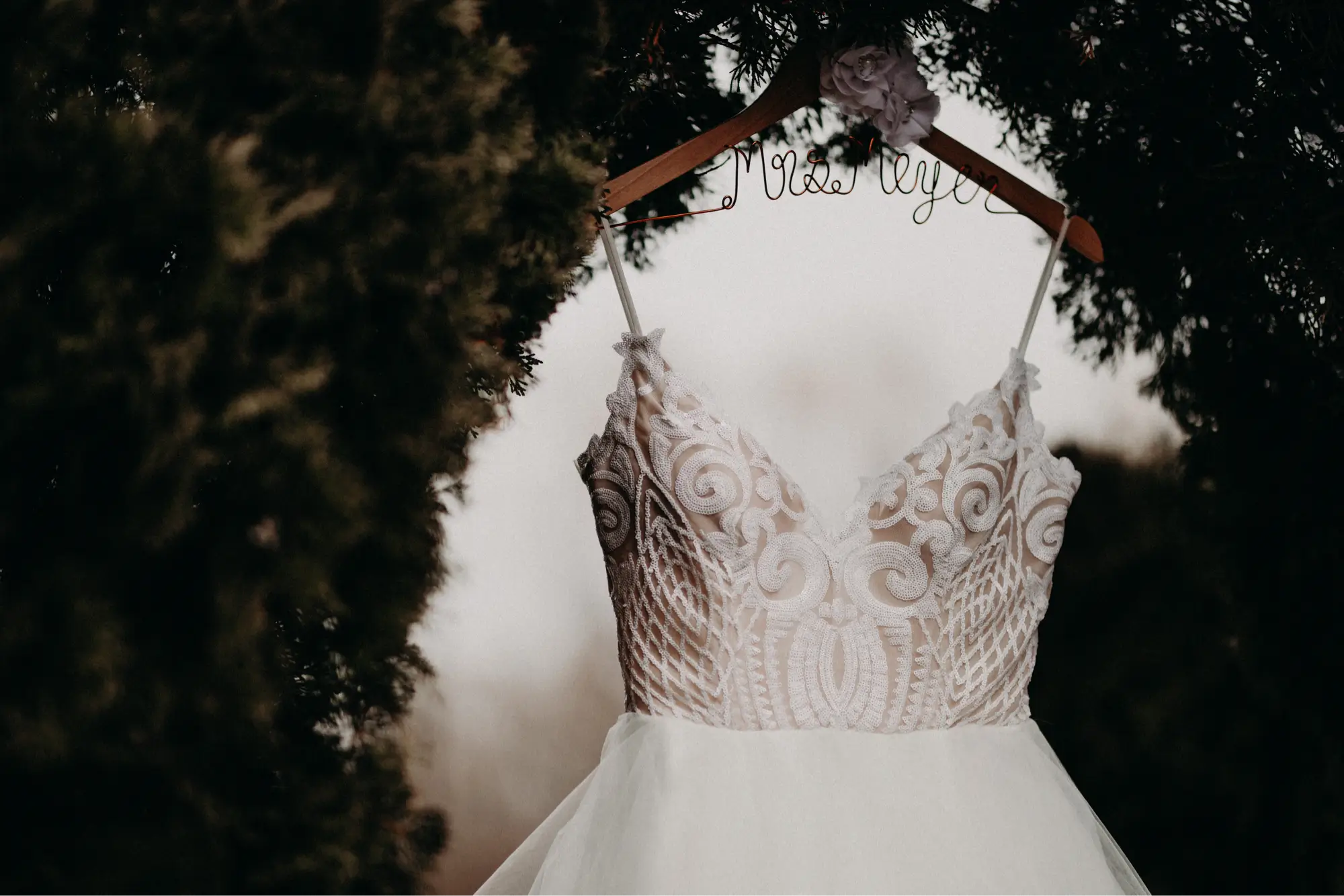Welcome to our exploration of wedding fashion history. Join us on a mesmerizing voyage through the changing trends in bridal attire over the years. Discover how styles have shifted across different time periods, blending traditional customs with modern influences. Each era leaves behind a distinct mark on the evolving world of weddings.
1900’s
In the early 20th century, from 1900 to 1910, wedding dresses mirrored the elegant Edwardian Era styles. These gowns followed the body’s natural shape with sleek outlines that accentuated feminine curves. They stuck to modesty and sophistication with high necklines and long sleeves. Luxurious materials like silk, satin, and velvet were popular for a refined look. Delicate lace with intricate designs adorned the bodice, sleeves, and hemline for added opulence. The dresses were embellished with subtle beading, pearls, and embroidery for grace and charm. Brides completed their attire with delicate gloves and fragrant floral bouquets, radiating timeless elegance on their big day.
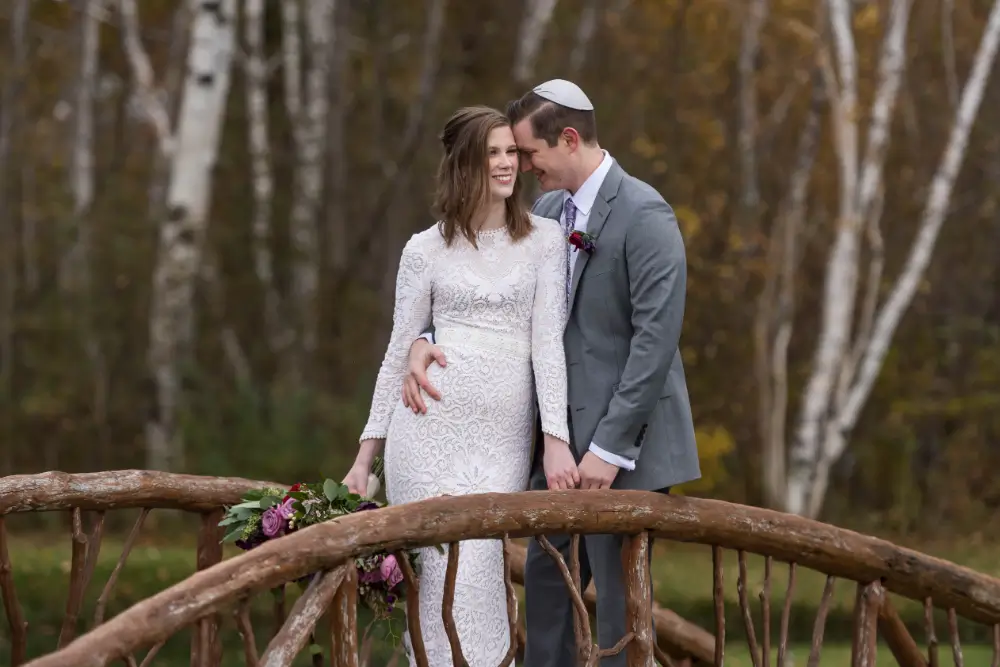
Photo Credit: Chris Van Winkle Photography
In that time, there existed a wide variety of hairstyles to choose from. Elaborate updos were the most popular choice, radiating refinement and grace. These intricate updos were often embellished with ornamental combs, dainty hairpins, or shimmering tiaras, adding a touch of opulence to any outfit. On the other hand, loose curls styled into soft waves were highly fashionable, gently framing the face before flowing down the back in a graceful and feminine manner. For brides, veils were an essential accessory made from delicate tulle or intricate lace, elegantly draped over their faces during the sacred ceremony to enhance their bridal beauty with a mystical charm.
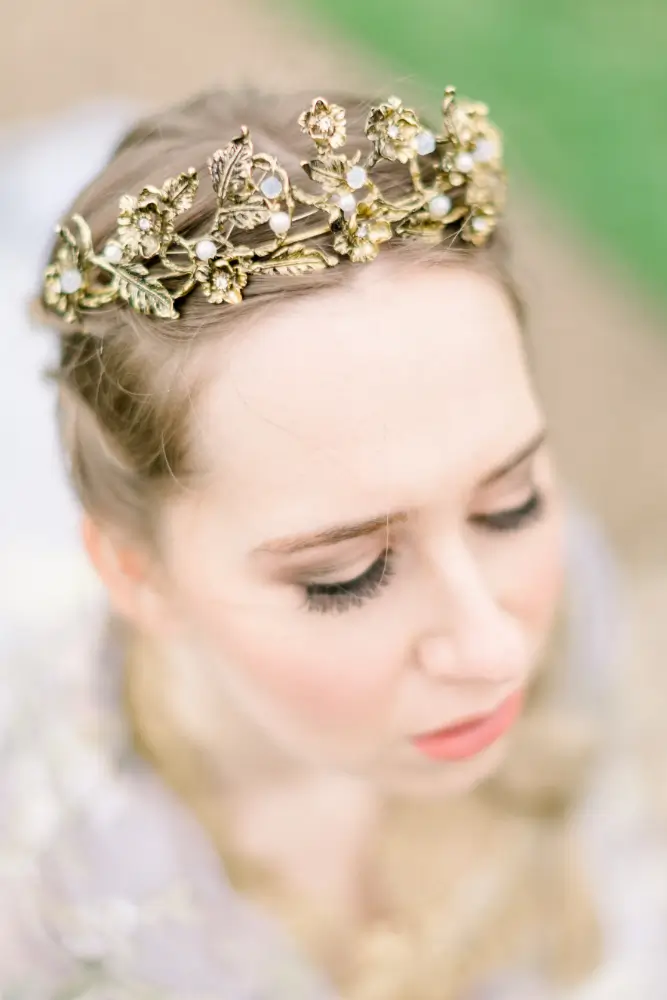
Photo Credit: Mandie Forbes Photography
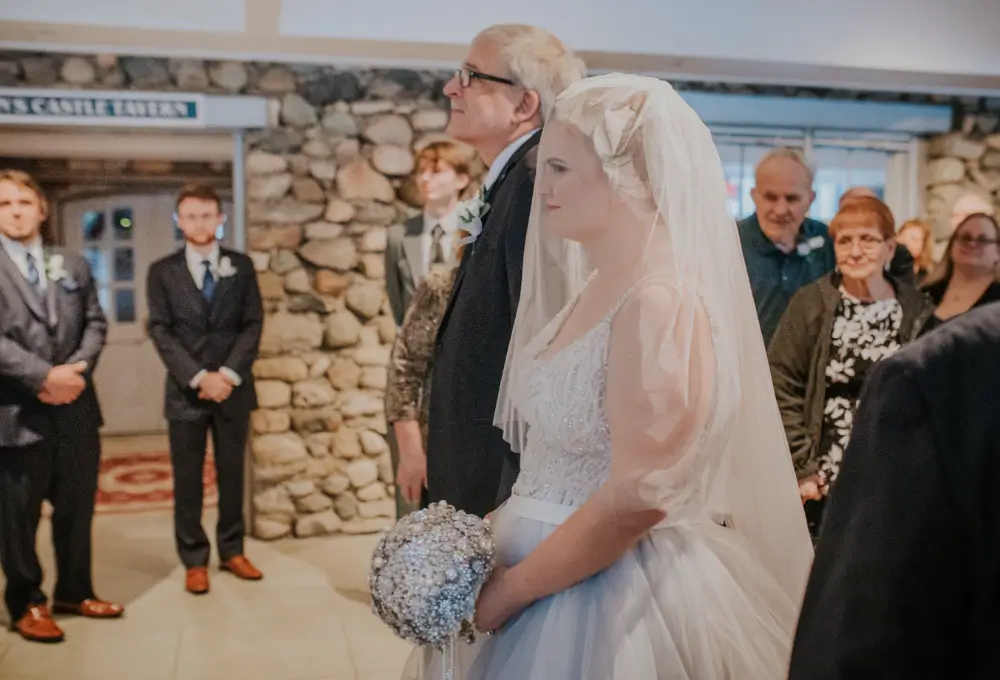
Photo Credit: Sunny Days Photography
1910’s
As the new decade arrived, wedding gowns shifted from Edwardian elegance to a looser, more relaxed style. At the start of the era, dresses shimmered with fine lace, beads, and intricate embroidery. The high waistlines highlighted the empire shape that was all the rage. The slim, floor-length skirts cascaded gracefully. Modesty prevailed with high necklines in vogue. Long trains added a touch of drama as brides glided down the aisle in luxurious fabrics. With World War I disrupting textile production, bridal fashion became more practical. Brides turned to affordable cotton and simpler embellishments. Waistlines lowered slightly to emphasize a natural look. Hemlines rose to ankle-length or even above the knee, reflecting women’s changing needs during wartime. Trains shortened and necklines dared to bare more skin as styles evolved.
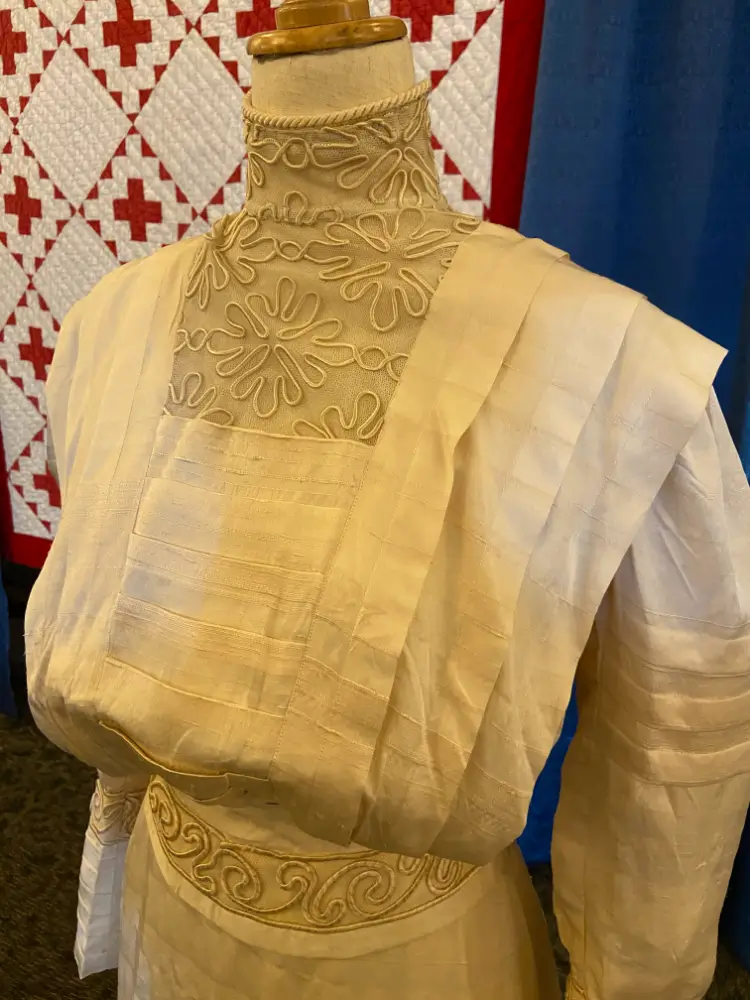
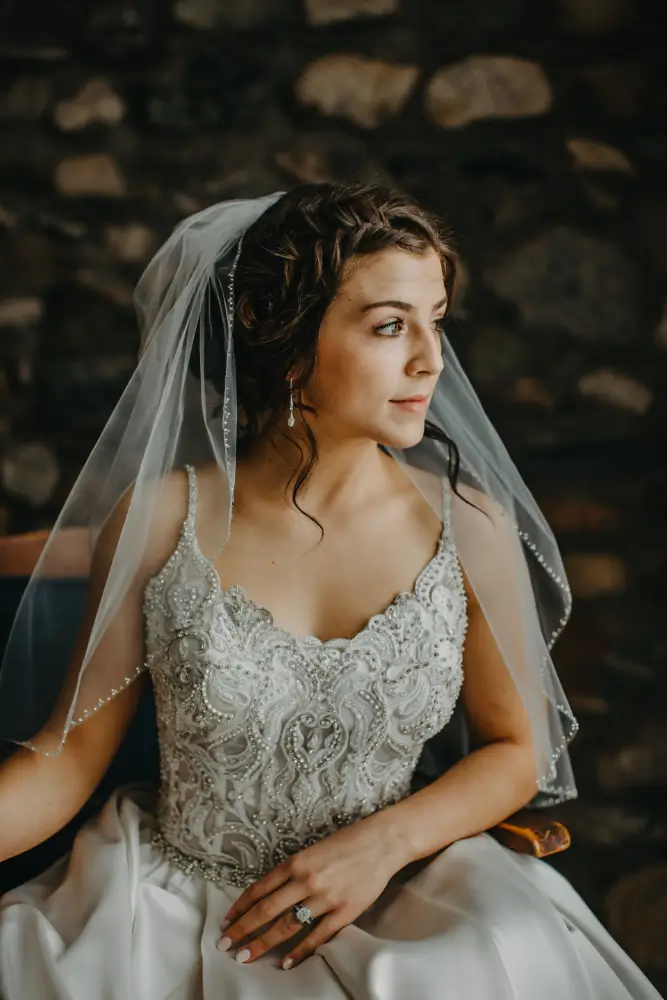
Photo Credit: Elizabeth Joy Photography
At the beginning of the decade, intricate updos and soft, cascading curls were incredibly popular. However, as time passed, shorter haircuts started to take center stage. These chic, abbreviated styles reflected the influence of the war and the changing roles of women in society. For brides, opting for bobbed or cropped hairstyles became increasingly common. To enhance their look with a touch of sophistication and allure, hairstyles were embellished with glittering hairpins, exquisite tiaras, or beautiful floral wreaths.
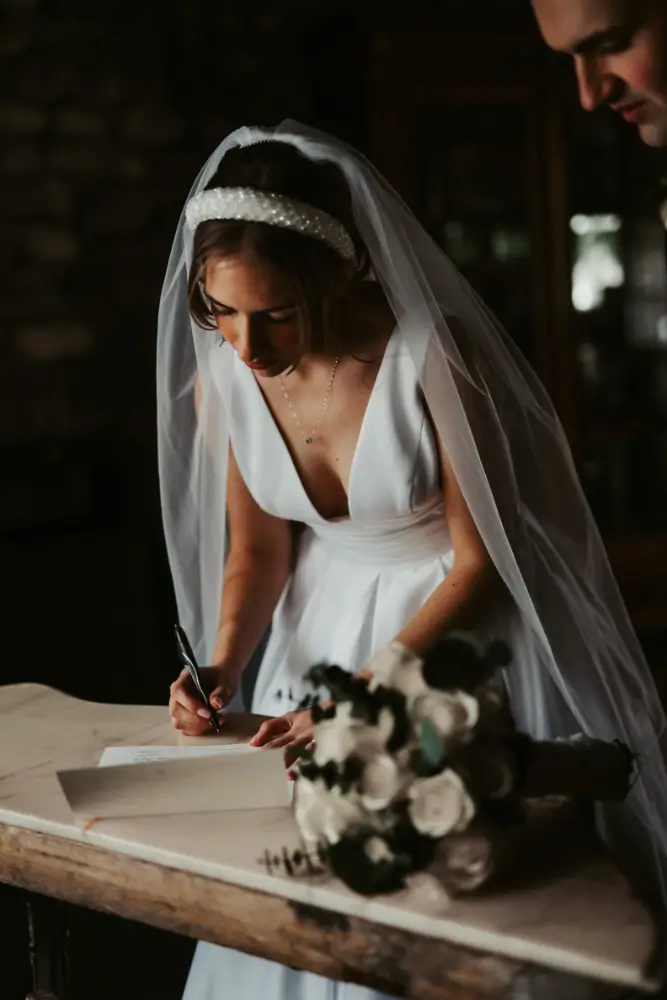
Photo Credit: Amber Fulbright
1920’s
The 1920s were all about breaking free from old rules and doing things differently. This period saw a big change in fashion, especially with the famous flapper style. Flapper outfits were known for their loose fit, straight lines, and low waistlines that sometimes dropped to the hips or even lower, giving a more boyish look. Clothes made of light fabrics like silk and chiffon dominated the fashion scene because they allowed for easy movement. The flashy and stylish vibe of the twenties came through in the details. Dresses sparkled with intricate beadwork, sequins, and shiny metallic threads arranged in cool geometric shapes and floral patterns. Necklines tended to be low and simple, matching the smooth and sleek outlines of the dresses. Skirts followed suit with a narrow cut that fell just above or below the knees.
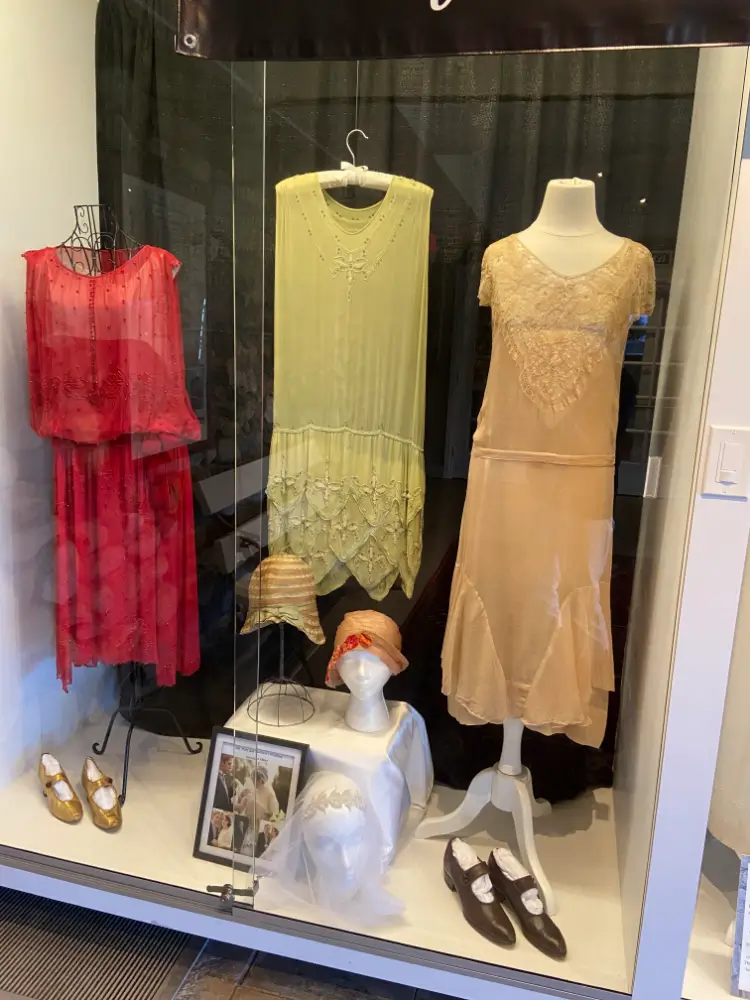
Photo Credit: 1920’s Showcase Flapper Dresses
The short bob haircut was a popular choice in the 1920s, symbolizing freedom and self-reliance. It framed the face elegantly, drawing attention to the neck and shoulders. To achieve this look, hairstylists created delicate finger waves that gave the hair texture and a graceful sway, resulting in a chic and sophisticated appearance. Brides adorned their hair with embellishments like jeweled headbands, feathers, and beaded pins. Veils were uncomplicated and brief, with birdcage veils, bandeau veils, and Juliet caps being trendy options that added a touch of charm.
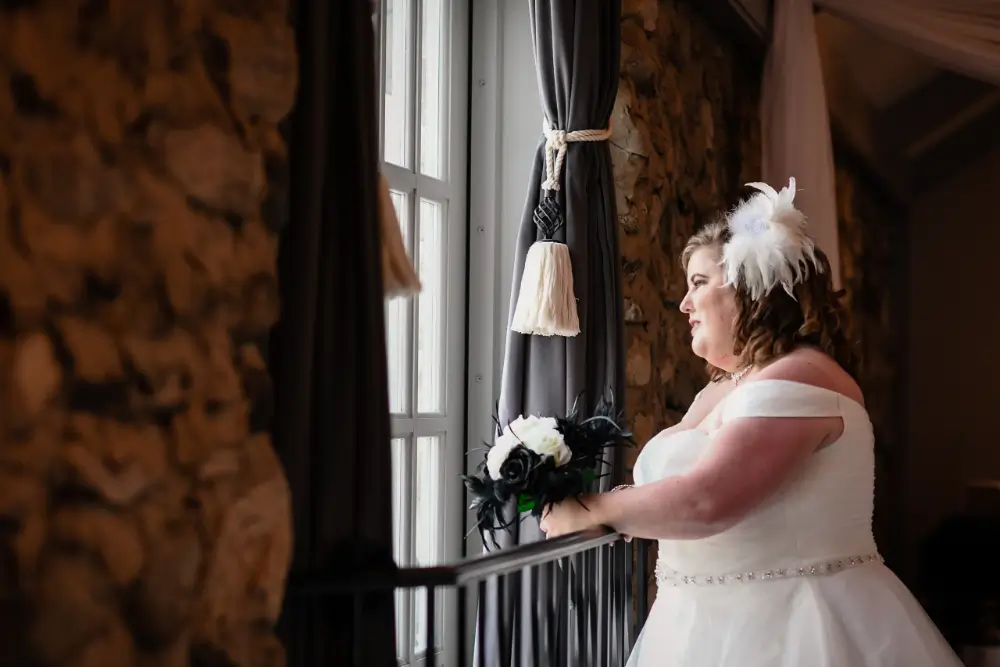
Photo Credit: A13 Studios
1930’s
During the 1930s, bridal dresses took on a more streamlined silhouette compared to the flapper era. These gowns hugged the body closely, featuring higher waistlines and hemlines that fell to mid-calf or ankles. The sleeves were either snug or delicately puffed, adding a touch of femininity. With silk and satin in short supply due to the hardships of the Great Depression, brides turned to more economical fabrics for their gowns. Simple yet elegant embellishments like lace, embroidery, and beads adorned the bodice and sleeves. Necklines tended towards modesty, often showcasing sweetheart or high neck designs. To complete their ensemble with a sense of refined grace, brides accessorized with gloves and pearl jewelry.
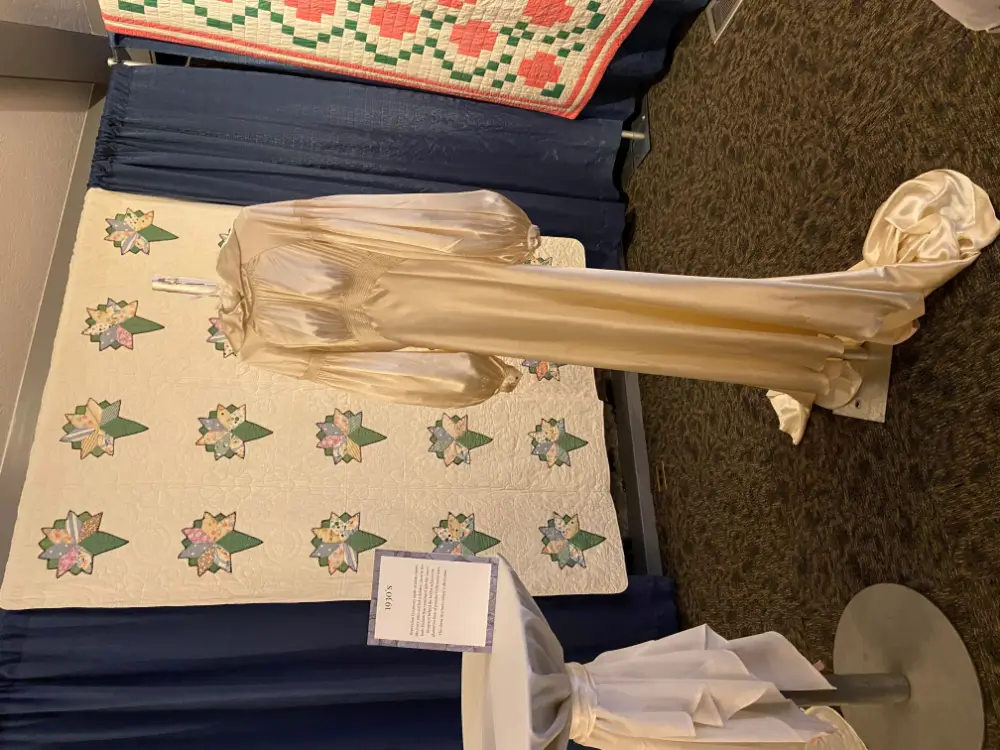
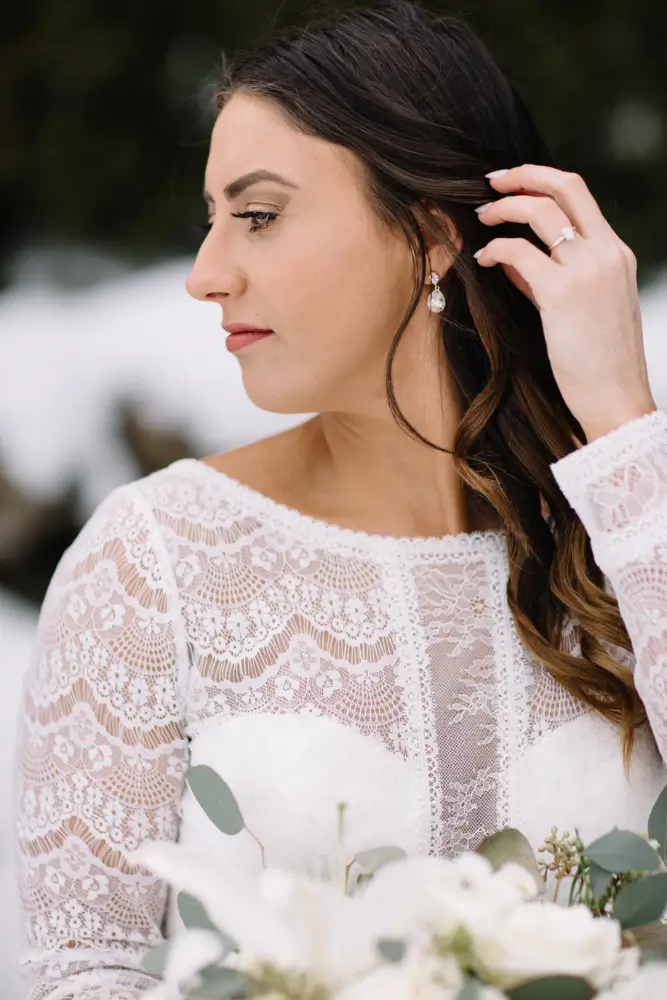
Photo Credit: Anna Beth Smith Photography
Brides loved soft ripples and elegant updos were still very popular. Mixing modern touches with the classic updo, low buns and stylish French twists gave a new twist to timeless elegance. To add more charm to the bridal look, accessories like delicate flower crowns, royal tiaras, and pretty Juliet caps provided a wider range of options that changed with the trends.
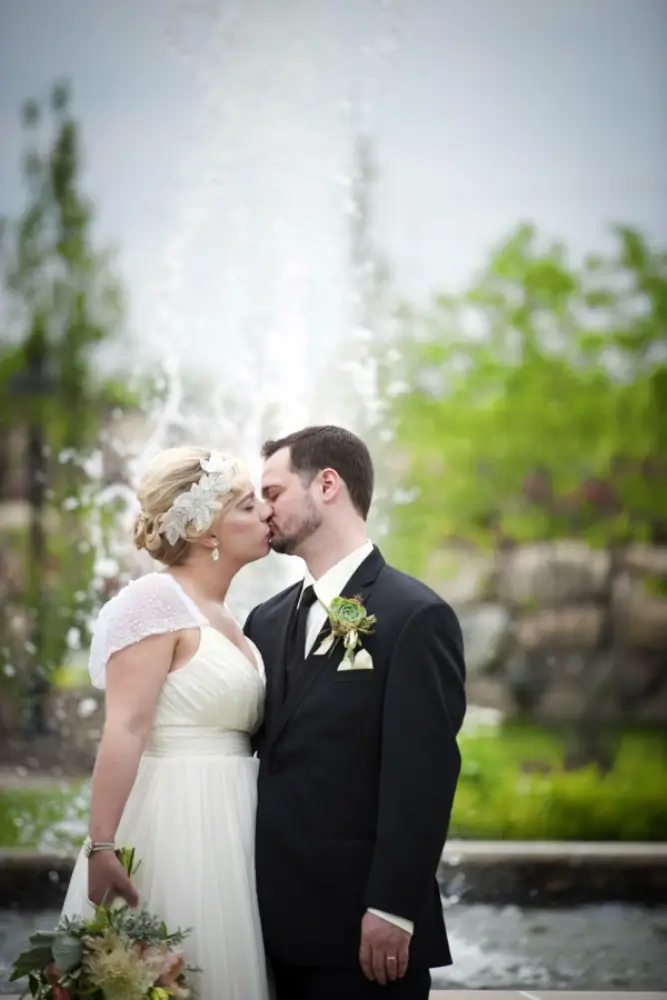
Photo Credit: Michigan Wedding Venue Norther Art Photography
1940’s
During the 1940s, during wartime, brides chose practical wedding attire due to fabric shortages. They went for uncomplicated designs with minimal fabric and decorations. Some even used old clothes or family treasures to craft their gowns. Long dresses were rare because of the lack of fabric, so most dresses were shorter, reaching mid-calf to ankle length. Sleeves varied from long to short, providing warmth and coverage. The styles were modest and functional, often with A-line or slim skirts and higher necklines. These versatile dresses could be worn again for different occasions. Simple details like lace trims or embroidery added a personal touch to these understated gowns.
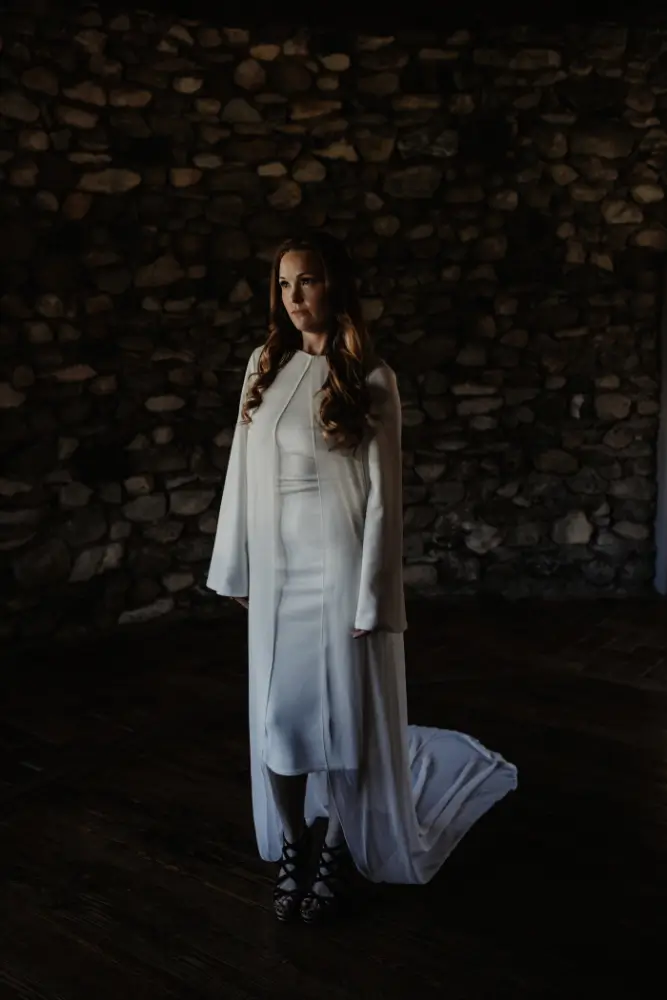
Photo Credit: Hallie Kohler
During this era, victory rolls became all the rage in hairstyling. This trend entailed elegantly rolling hair sections away from the face and securing them with pins, resulting in a chic retro aesthetic. To elevate this look further, individuals often adorned their victory rolls with charming flowers, bows, or ornate hairpins. For brides, updos remained a timeless favorite. These sophisticated hairstyles involved sweeping the hair up and off the face, typically fashioned into graceful low buns or classic French twists that exuded elegance and grace. Additionally, curls gained immense popularity during this period. Many opted for loosely styled waves or bouncy curls to add a touch of glamour to their overall appearance.
1950’s
In the 1950s, fashion embraced glamour and femininity once again following the war. Wedding gowns highlighted women’s natural curves with a classic hourglass shape: snug bodices, defined waists, and flouncy skirts. Necklines varied, but sweetheart and scoop necks were in vogue, while off-the-shoulder styles gained popularity. Silk, satin, tulle, and lace were go-to fabrics for bridal attire. Dresses often boasted floral patterns, scalloped hems, and delicate pearl details for a vintage feel. Long skirts with layers of tulle underneath made a grand comeback, alongside tea-length dresses that hit mid-calf for brides seeking a more relaxed vibe.
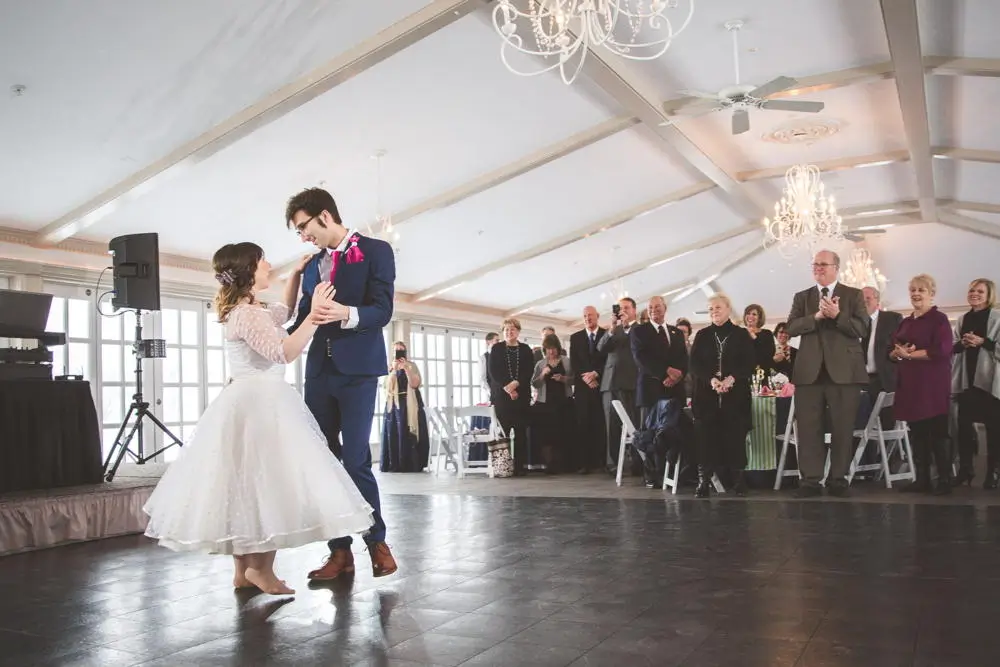
Photo Credit: Jason Switzer Photography
Updos were timeless and chic, with hair elegantly styled up in intricate twists and buns. Soft, glamorous waves remained a favorite, gently framing the face and flowing down the back in a graceful and feminine manner. Brides adorned their hair with an array of beautiful floral wreaths, delicate birdcage veils, and sparkling jeweled headbands, each enhancing their look with a touch of elegance and charm.
1960’s
As the 1950s full skirts faded away, a surge in popularity for sleek and minimalistic wedding dresses took hold. These gowns were crafted from airy modern materials such as silk, crepe, chiffon, and synthetic blends. The neckline options multiplied, offering brides a plethora of choices including scoop necks, high necklines, illusions necklines, and chic halter neck designs that infused a contemporary and youthful vibe into their bridal ensemble. Embracing simplicity, wedding dresses of this era showcased clean and minimalist accents with only a hint of embellishment or none at all. Pops of colors like yellows and floral details were all the rage. While waistlines maintained definition, they were subtly understated compared to previous trends. Some daring brides opted for mini-length dresses for a cutting-edge bridal statement, while others elegantly adorned knee-length or tea-length styles for their special day.
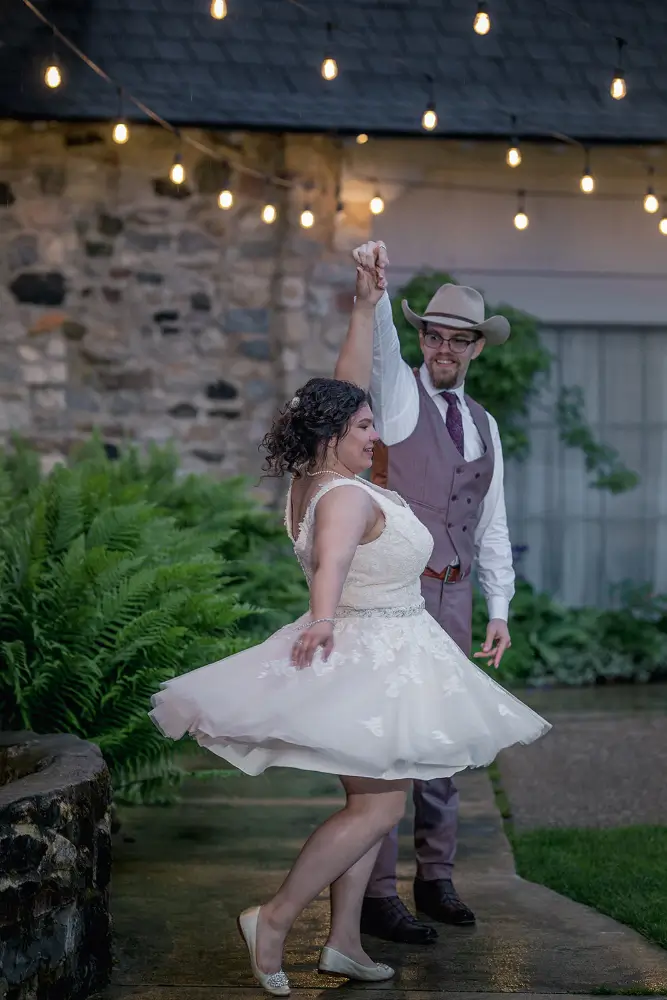
Photo Credit: meg Paxton photography
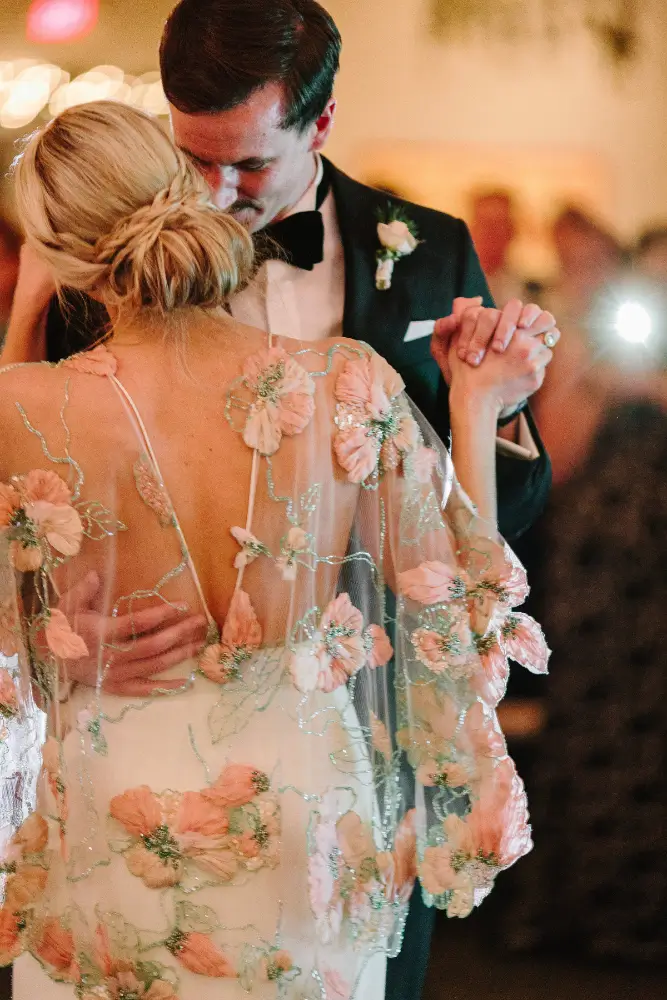
Photo Credit: Nathan English Photography
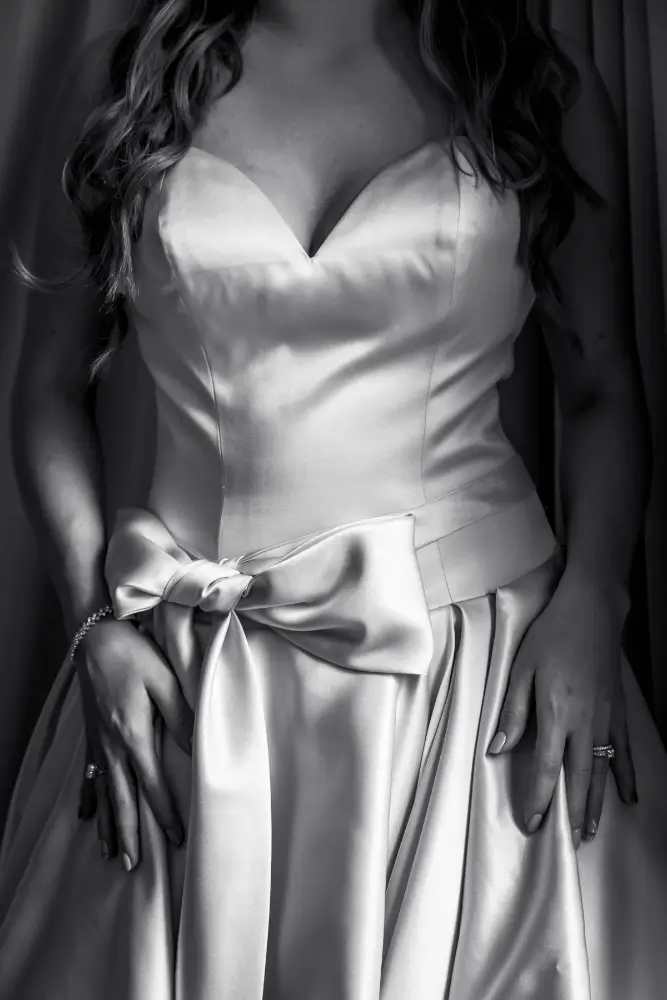
Photo Credit: Amber Henry Photography
The iconic beehive hairdo featured intricately teased and backcombed locks elegantly piled atop the head, often adorned with ornate hairpins or delicate veils. Alongside the bouffant, this trend captivated many with its height and volume achieved through teasing at the crown. The remaining hair cascaded in sleek waves or bouncy curls framing the face. For brides seeking a more natural allure, some opted for flowing waves or straight locks left down. To enhance these styles, headbands, tiaras, and veils embellished with flowers, beads, or lace added a touch of elegance and charm.
1970’s
Wedding gowns in the 1970s embraced loose and flowing shapes, moving away from the more rigid designs of earlier times. They were often made from materials like cotton, linen, and chiffon to mirror the carefree spirit of that period. The necklines offered a wide range of options including off-the-shoulder, deep V-neck, and halter styles. Bohemian touches were incorporated for added texture and visual appeal. The dresses came in various lengths, from sweeping the floor to reaching the ankles, with some brides choosing shorter hems for a more laid-back and effortless vibe.
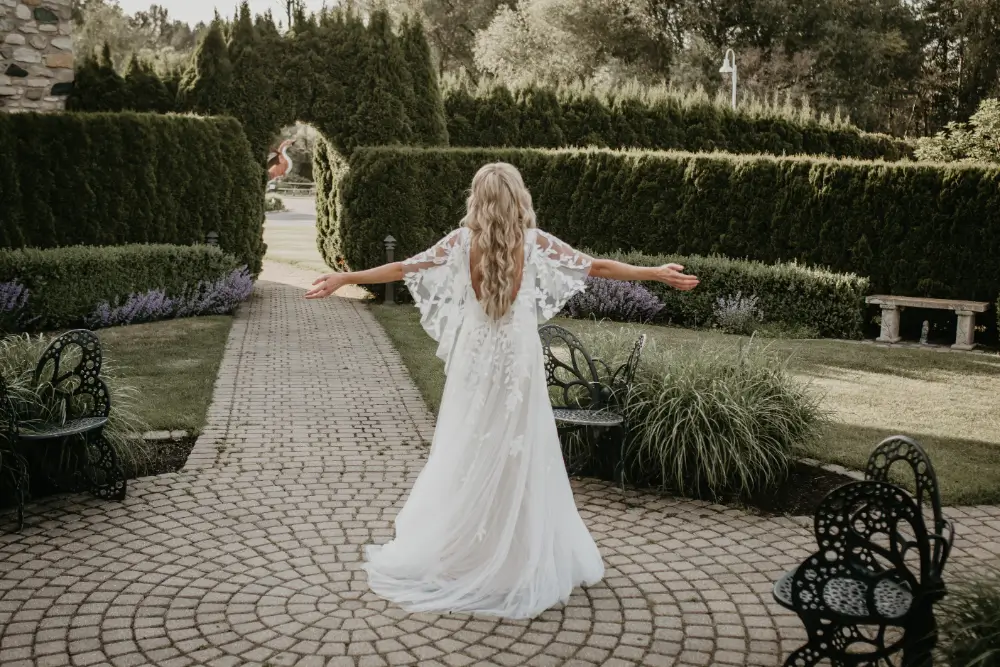
Photo Credit: Jesslin Rae Photography
During the groovy 70s, lots of brides loved having long, free-flowing hair that showed off the bohemian and hippie vibes of the era. They often let their hair down in loose waves or curls, keeping it natural and easy-going. Flower crowns were a big hit, giving their hairstyles a touch of nature-inspired beauty and charm. Braided looks like fishtail braids or relaxed braids, as well as headbands, were popular too.
With their natural hair textures, brides could effortlessly rock carefree styles on their big day.
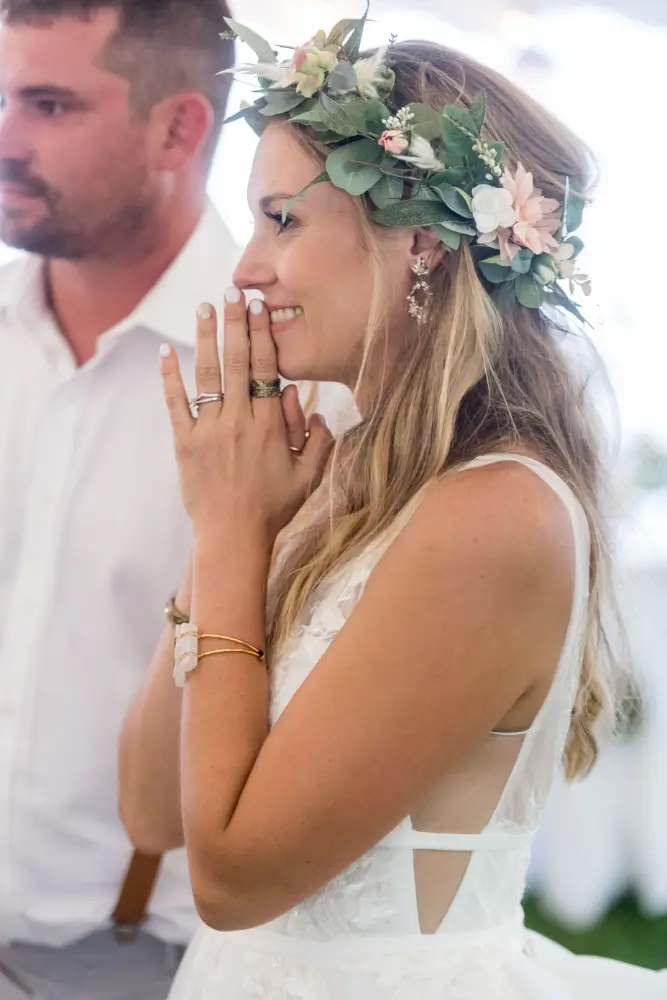
Photo Credit: Chris Van Winkle Photography
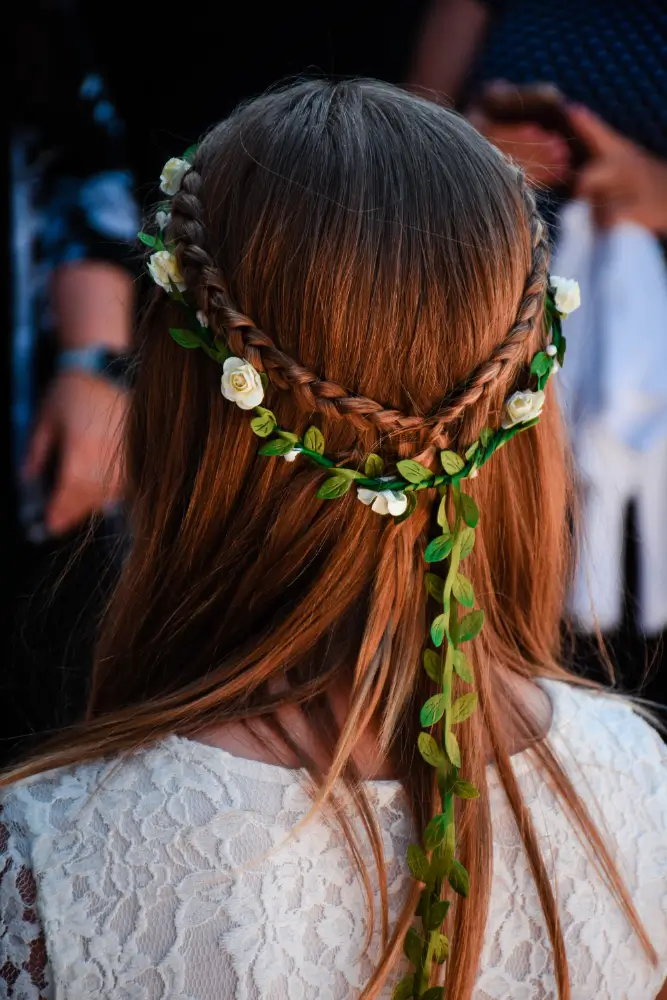
Photo Credit: A13 Studios
1980’s
The transition from the 70’s to the 80’s brought a big change in wedding fashion, moving towards luxury and grand styles. Influenced by Princess Diana’s famous dress, brides leaned towards extravagant designs with full shapes, airy sleeves, snug tops, and long trains. Rich fabrics like satin and taffeta were decorated with detailed lace, shiny sequins, or elegant bows. While white was still common, some bold brides chose soft pastels or bright colors to show off their individuality. The period also introduced off-the-shoulder necklines that radiated romance and elegance. From deep sweetheart necklines to high-neck designs adorned with delicate lace or sparkling crystals, a range of neckline choices emerged. A notable trend was the use of shoulder pads that gave bridal gowns a structured and powerful look.
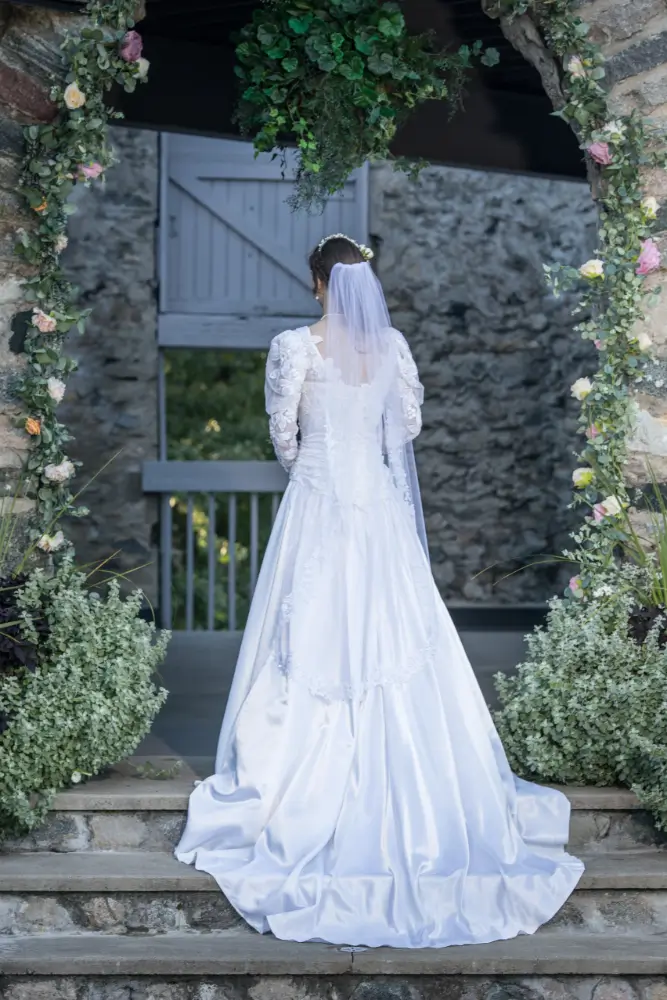
Photo Credit: Paxton Photography
Staying true to the era’s large styles, wedding hairdos were all about big curls, full waves, and teased updos. Brides loved the trend of voluminous hair, choosing styles that added height and excitement to their appearance. Perms were a hit, giving soft, bouncy, and flowing curls that matched the romantic vibe of the time. Updos were still a favorite among brides who fancied intricate buns decorated with veils, tiaras, or fancy hair accessories. In essence, wedding hairstyles captured a mix of timeless elegance and the daring glamour of the period.
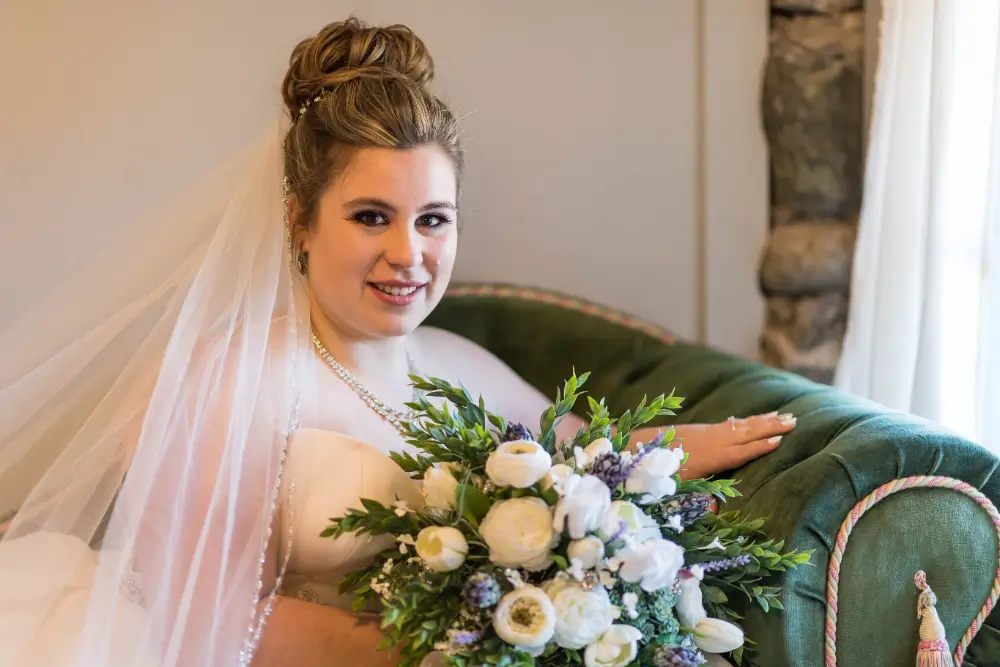
Photo Credit: Christ Van Winkle Photography
1990’s
Brides were drawn to a shift in bridal fashion that embraced simplicity and elegance, opting for minimalist silhouettes defined by clean lines. The sleek A-line and sheath designs delicately accentuated their figures, while column dresses and slip styles gained popularity for their ability to elongate frames and flatter bodies effortlessly. Modern bridal trends showcased chic spaghetti straps, with lace adding romantic details through subtle accents or vintage-inspired overlays. Satin and silk continued to reign as the top fabric choices, draping gracefully over the bride’s silhouette. High necklines, sleeveless cuts, and strapless styles emerged as trendy options, offering versatile and flattering looks. Seeking uniqueness, brides explored backless gowns and asymmetrical cuts in their search for the perfect wedding ensemble.
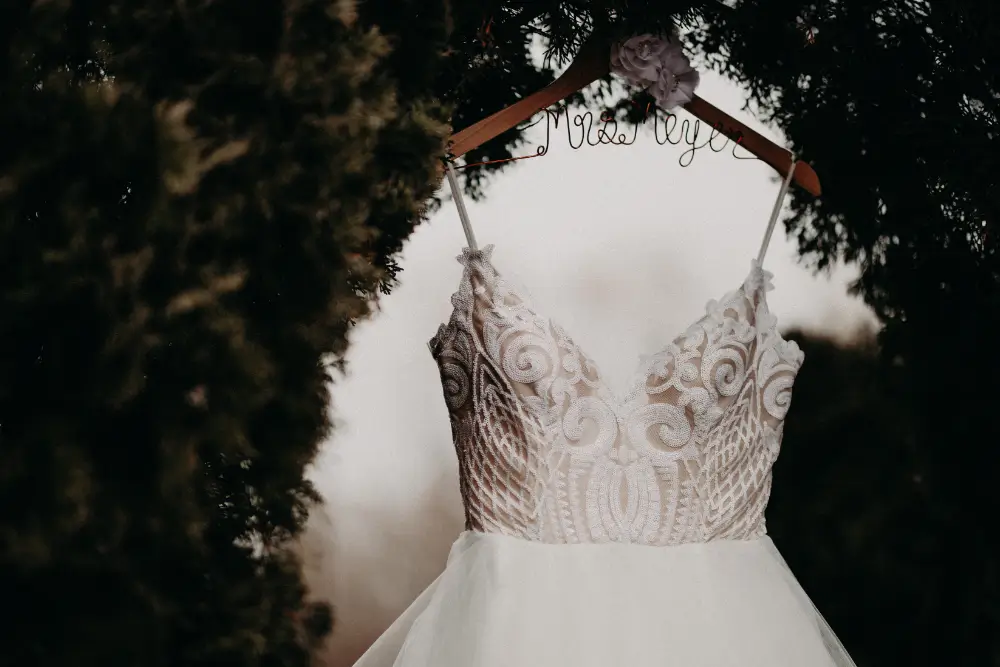
Photo Credit: A Thorns Photo
Wedding hair during this time went back to timeless and classy looks with a modern touch. Brides looked to Jennifer Aniston character, Rachel from the show Friends for ideas, opting for layered haircuts with highlights framing the face. The half-up, half-down style became trendy, striking a balance between formal and casual with gentle waves or curls cascading around the face. Basic updos remained popular choices for brides too, often adorned with dainty hairpins, flowers, and tiaras.
2000’s
The early 2000s saw a comeback of timeless beauty in wedding dresses, blending classic styles with a modern twist. Brides could choose between snug mermaid silhouettes and extravagant ball gowns to suit their preferences. Popular necklines included strapless and sweetheart styles, creating a romantic and flattering look. Fashion designers also introduced new variations like illusion necklines and open-back designs, adding allure to traditional shapes. These gowns were adorned with intricate details, delicate embroidery, and luxurious fabrics like silk, tulle, and lace. During this period, destination weddings became trendy, leading to the rise of light and flowing dresses perfect for beach or garden ceremonies.
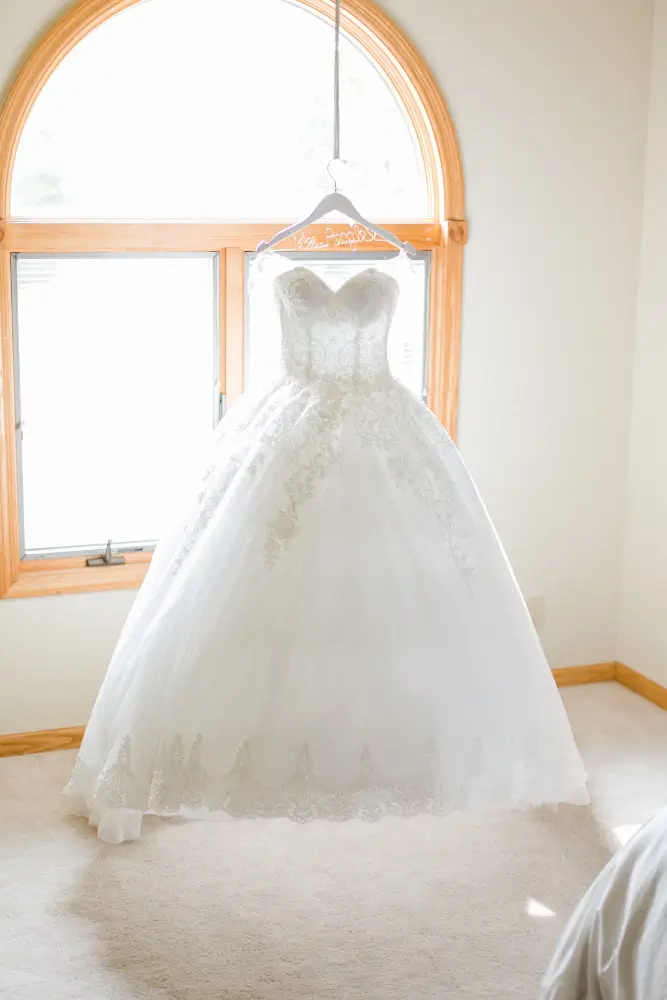
Photo Credit: the Weber Photographers
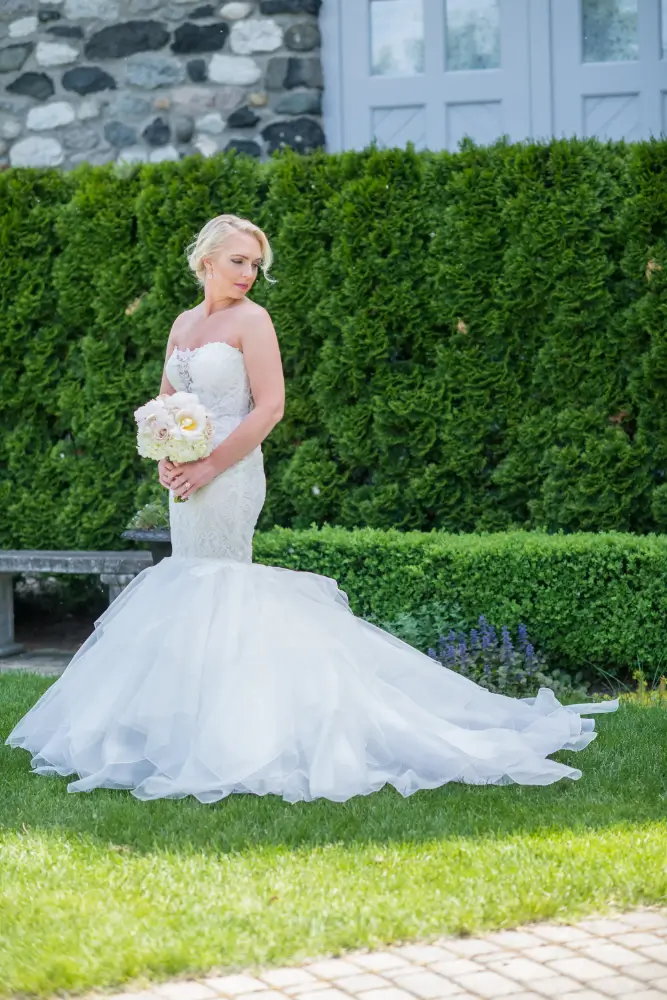
Photo Credit: Marvin Hall Photography
Hairstyles in the 2000s were all about being versatile and showing personal style. Brides liked elegant updos with soft strands of hair around their faces, giving them a neat yet relaxed appearance. Braided updos became trendy, giving a boho vibe to traditional bridal styles. Some brides wore their hair down in gentle waves or straight styles, embracing their natural hair look. Accessories like tiaras, headbands, and hair vines added some sparkle and charm. Veils were often worn at fingertip or cathedral lengths, adding drama and romance to the bride’s overall look.
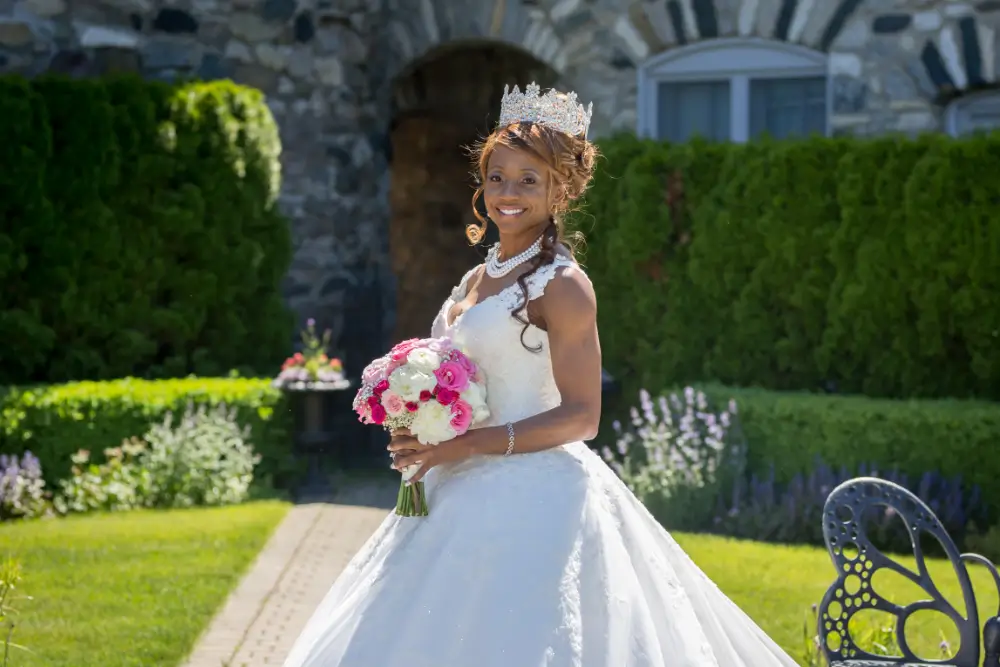
Photo Credit: Paxton Photography
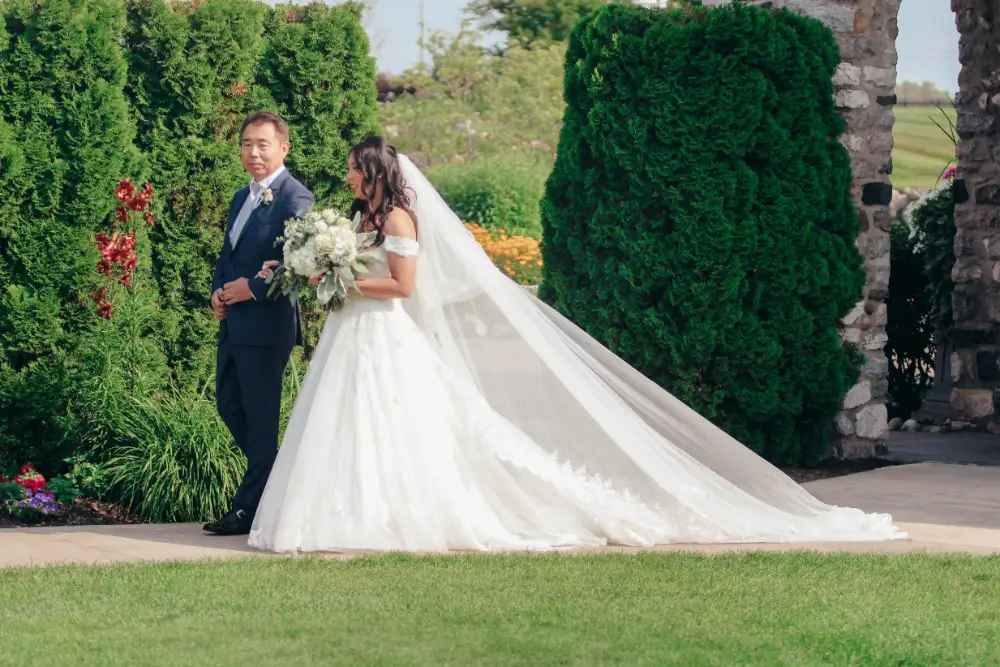
Insert Paxton Photography
2010’s
Wedding dresses combined classic beauty with modern flair, offering a variety of shapes to suit each bride’s individual taste. The timeless princess ball gowns stayed in style but with more fitted tops and full skirts made of layers of light fabric. Mermaid and trumpet styles also became popular, fitting closely and then flaring out dramatically to highlight the bride’s curves with a touch of elegance. Transparent necklines became more common, adding a charming detail while still keeping things modest. Off-the-shoulder and cap sleeves were popular choices for brides wanting a stylish and feminine look, while deep v-necks made a bold statement for those feeling more adventurous. Brides also started exploring non-traditional colors and textures, like blush pink, champagne, or black to show off their unique personalities.
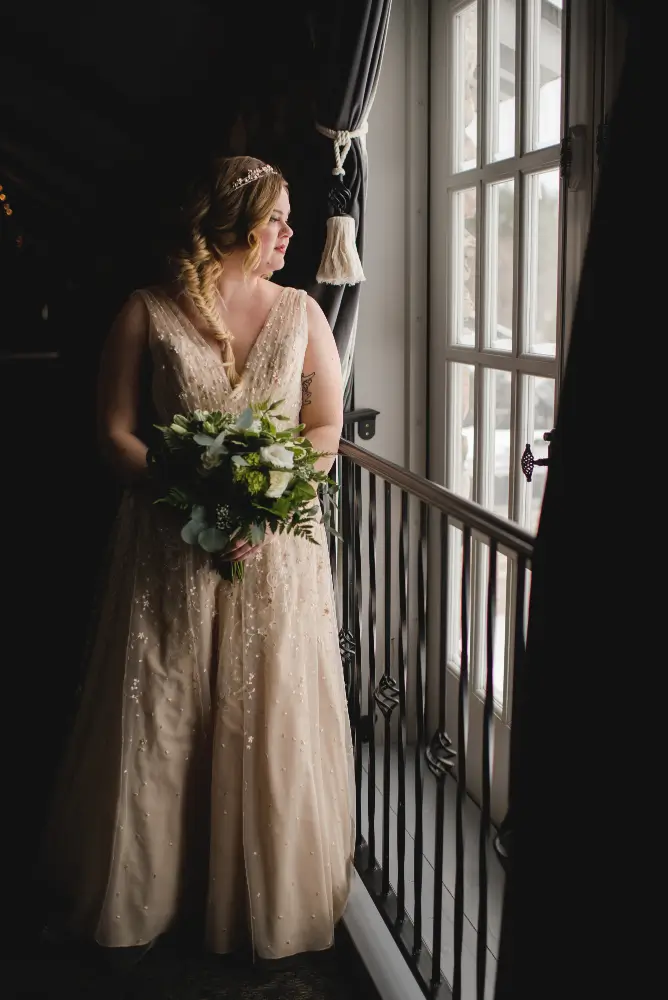
Photo Credit: Alyssa & Drew Photography
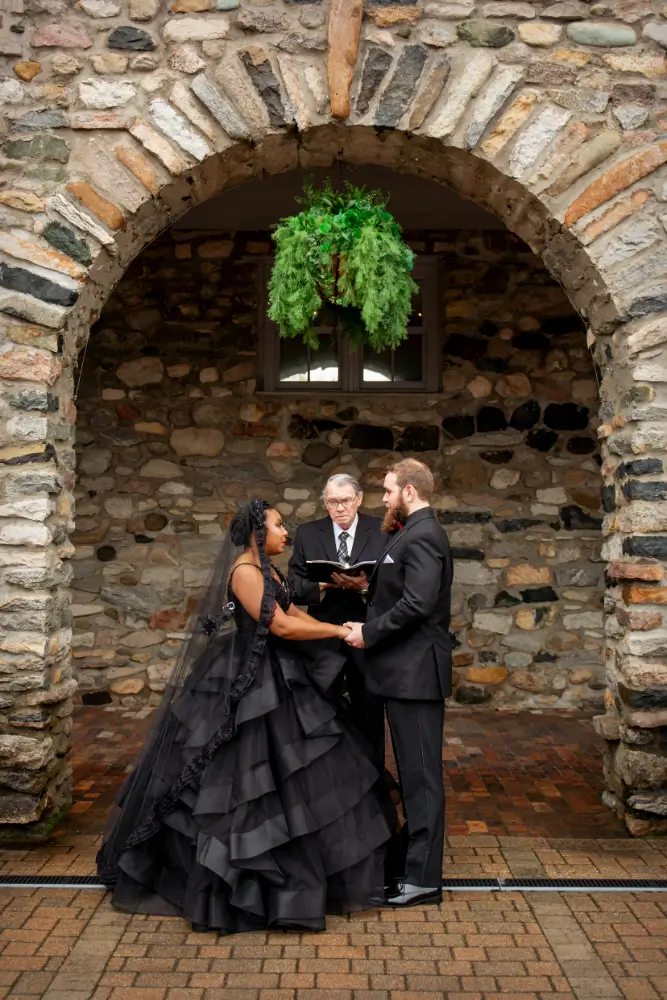
Photo Credit: Loose Canon Photography
During the early 2010s, brides favored a trend of simple elegance. They chose effortlessly stylish hairstyles with soft waves and delicate curls. Many embraced a bohemian style, opting for intricate braids like fishtail and halo braids to achieve a whimsical and relaxed look. Alongside these boho styles, classic options such as neat buns and gentle waves were timeless favorites. Floral crowns made a comeback, adding a perfect touch to the bohemian vibe. Brides also adorned their hair with subtle pins and elegant jeweled headbands to add their unique personal flair to their hairstyles.
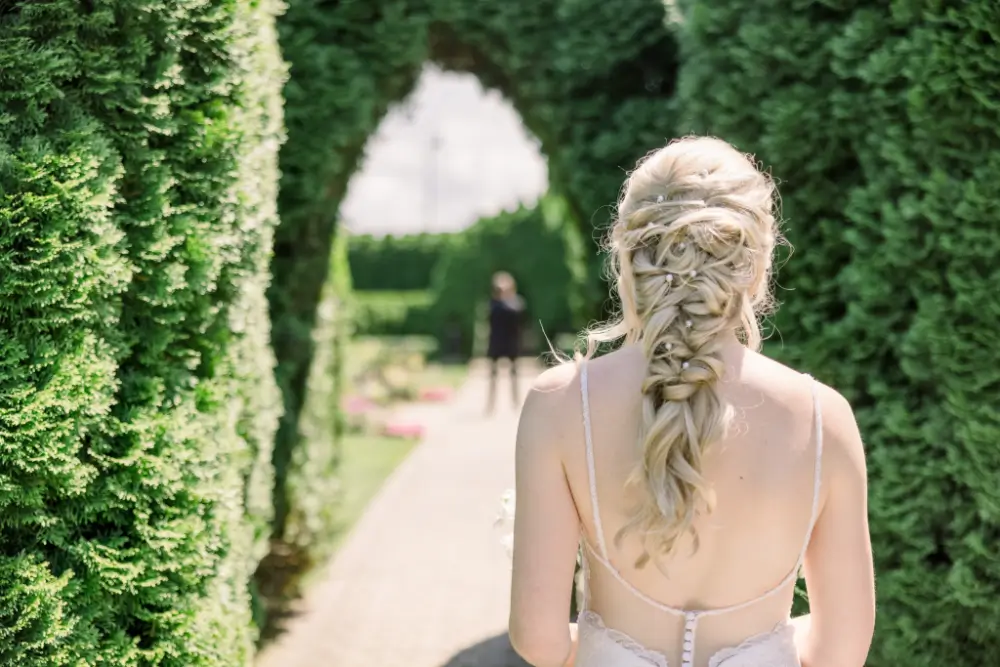
Photo Credit: Mandie Forbes
2020’s
Wedding fashion is evolving in the 2020s with designers offering a range of sizes and styles to suit each bride’s unique vision. The trend now leans towards sustainable materials such as recycled fabrics and organic fibers, while second-hand and vintage wedding dresses are becoming more sought after. Clean, modern designs with minimalistic details are regaining popularity, alongside the rise of jumpsuits and pantsuits as favored options for contemporary brides aiming to make a statement. Combining crop tops with full skirts creates a chic bridal look for those setting trends, infusing a modern twist into traditional wedding attire that mirrors the varied preferences of today’s brides.
Brides nowadays can choose from a variety of hairstyles that suit their preferences. Modern updos are a hit, especially those with creative elements like braids and asymmetrical twists. More and more brides are opting to flaunt their natural hair, whether it’s curly, kinky, or straight. Soft waves continue to be a popular choice, often complemented by stylish hair accessories such as pins, flower crowns, headbands, or colorful ribbons. Ultimately, the options are endless for brides to find the perfect hairstyle that reflects their individual style on their special day.
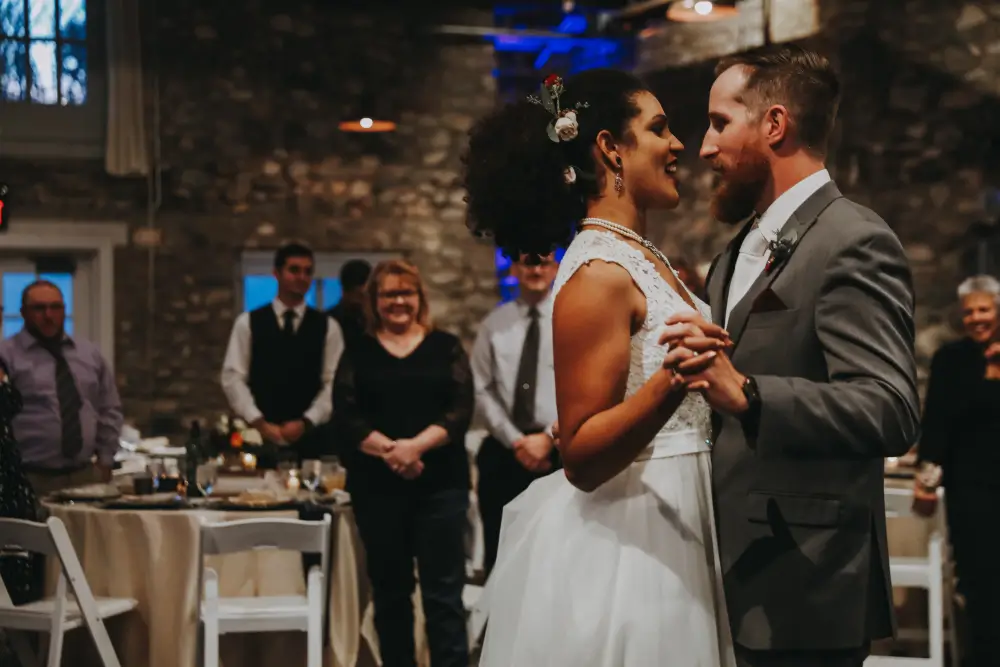
Photo Credit: Kendra Lynece Photography
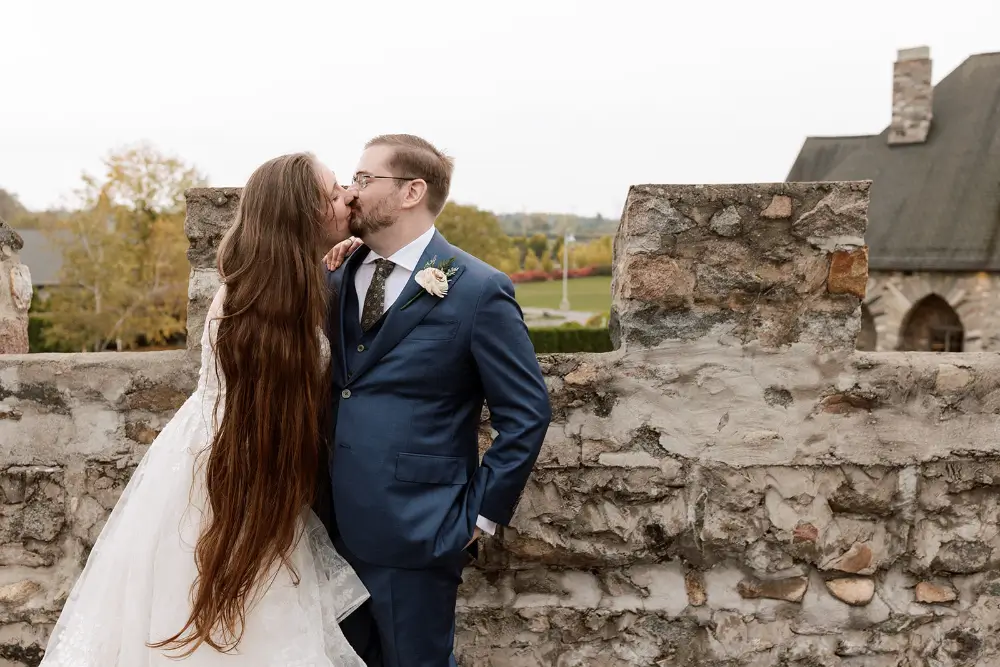
Photo Credit: Michael Murphy IV Photography
In the end, no matter how styles shift in wedding fashion, what truly matters is the bride’s personal selection of dress and hairstyle. It’s not just about how she looks, but about coming together with her soulmate and feeling absolutely beautiful.
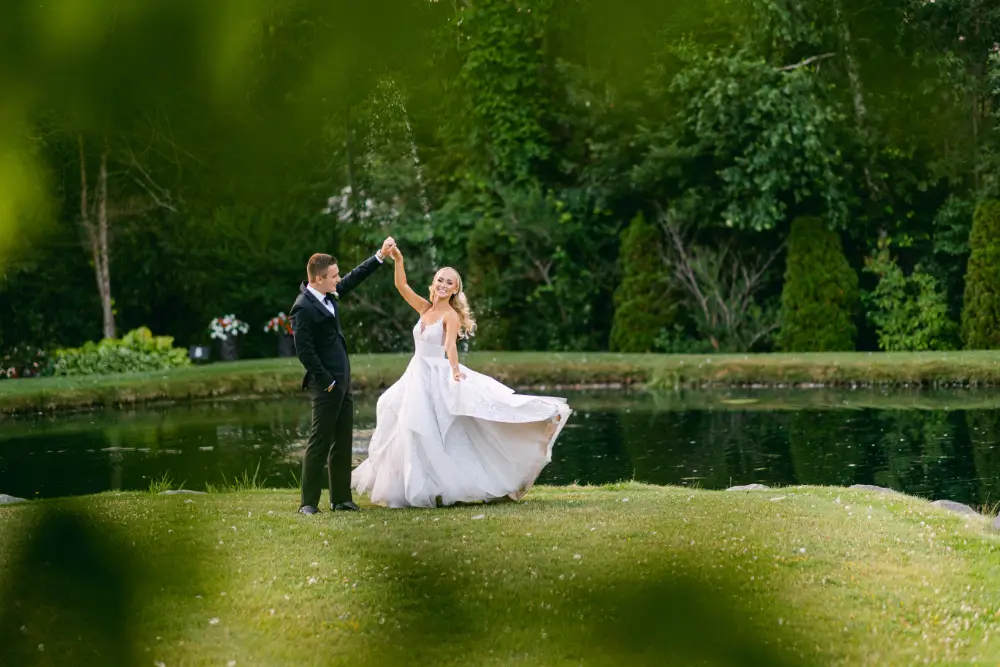
Photo Credit: Inly Co Weddings
